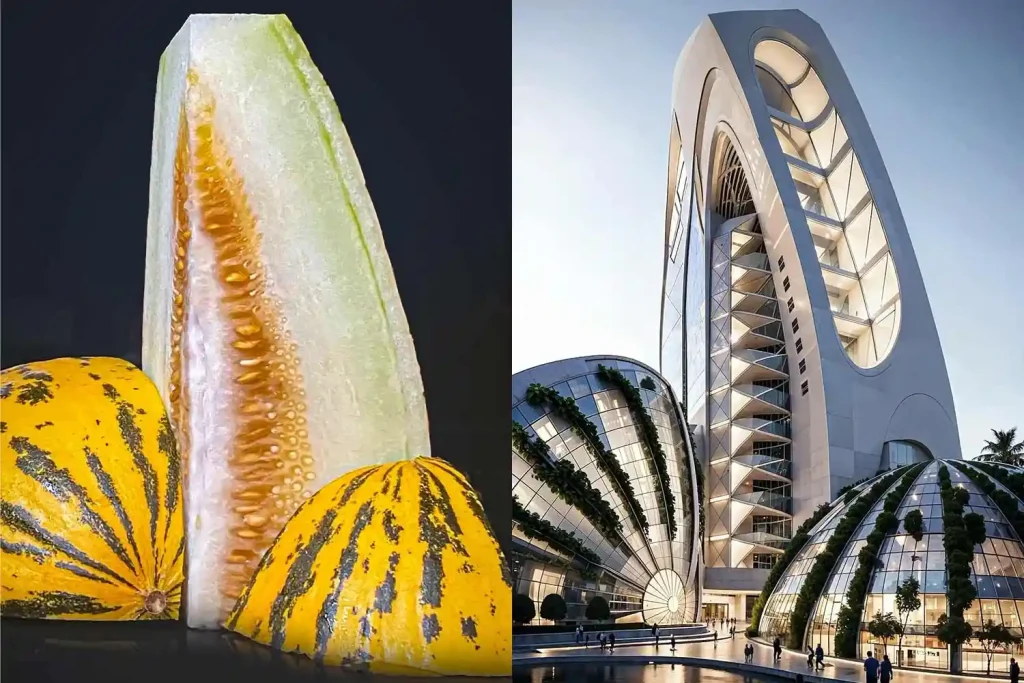We had an interview with Fatih Eksi, who is the founder of Blick3d Production Architecture Studio and also works professionally as an architect. Lately, he has been interested in AI and mainly creating structures inspired by vegetables, fruits, and daily objects we use.

Fatih Eksi’s Journey
Fatih Eksi’s journey in architectural visualization spans over 15 years, which is marked by his dedication to making buildings aesthetically pleasing through 3D animations. “My professional life has been dedicated to ensuring buildings look aesthetically pleasing and visualizing them. I studied architecture for five years at Vienna University of Technology,” said Fatih.
“Before artificial intelligence, my main interest was architectural visualization. However, over time, I realized that the existing forms, objects, and patterns in nature always surpass what we create. Therefore, I focused on discovering, utilizing, and shaping these existing forms.” added Eksi.


How Fatih Eksi uses AI
“I use artificial intelligence to shape the forms I capture into a specific design. AI offers me many options based on the references I provide, and I select the options I like. Sometimes I like what it offers, and sometimes I don’t, so I guide it. I work until I achieve the desired beauty, striving to obtain something close to the essence of the captured form.” This technology not only enhances his creative flexibility but also accelerates the visualization process, allowing him to focus more on the artistic aspects rather than getting bogged down by intricate details.
If you are interested in learning how to embed AI (Artificial Intelligence) in architecture and design workflows, check out the online workshops at the PAACADEMY. These workshops are taught by leading designers from around the globe, where they showcase how they do their creative design processes with AI.
Eksi’s ability to find inspiration in unconventional places, such as the intricate patterns inside a lemon, demonstrates his unique perspective on design. This approach has led to innovative projects that stand out for their originality and connection to natural forms. His keen eye for detail allows him to transform everyday objects into architectural masterpieces, blending the mundane with the extraordinary.
“I started using unconventional sources of inspiration by noticing the structure inside a lemon while drinking tea. I liked the details and patterns inside the lemon and produced a project based on these details. I was pleased with the result and continued on this path.”
Tools that Fatih Eksi uses
Eksi’s toolkit includes various AI and software tools that assist him in different stages of his design process. “I use Stable Diffusion, but I also use a more user-friendly version called AIR for SketchUp. This software helps me, especially in my initial work on shaping the form. Additionally, I use software like Krea.AI and Magnific AI to enhance the quality of the images I create. For animations, I use various software like Topaz Video AI and LUMA LABS, and sometimes I do manual animations, intervening with After Effects and Photoshop.”
Eksi acknowledges the challenges inherent in AI-based visualization, particularly in maintaining the essence of the original forms. Striking the right balance between intervention and preservation is crucial to ensuring the final project retains its authenticity and does not appear overly artificial or simplistic. This delicate balancing act is a testament to his skill and dedication to his craft.
For those interested in harnessing AI tools, Eksi emphasizes the importance of continuous learning and staying updated on the latest advancements. “Something new comes out every day, and keeping up with these developments is very important. Following YouTube channels or accounts that publish on these topics on Instagram is necessary. Everyone has their own network, but staying updated is crucial,” said Eksi.



















Leave a comment